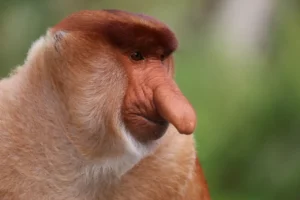If you’re looking for Scary Sea Monsters, then you are at the right place. In this article, we will discuss the Top 10 Alive Scary Sea Monsters.
In the past, humans knew much less about the ocean world than today. Therefore, when seeing many strange signs and huge creatures, people at that time could easily call them sea monsters or sea monsters. But with the passage of time and changes in the environment, many giant creatures have become extinct in the ocean world. However, if you pay attention, you can also find many huge and terrifying sea monsters alive. From faceless deep-sea creatures to terrifying deep-sea predators, today I’m going to share with you the top 10 alive scary sea monsters that still exist in the world today.
Top 10 Alive Scary Sea Monsters
1. Anglerfish

These fish are quite scary, especially when spotted in the dark. According to National Geographic, there are more than 200 species of anglerfish in the world, and their size varies widely. Some larger species can grow to 1 meter, although most anglerfish are much smaller, just under 30.5. centimeter. Females have a “fishing rod” on their forehead that they use to lure prey closer so they can grab and swallow it.
Males, on the other hand, tend to be much smaller and use their sharp teeth to secure themselves to selected females at the start of reproduction, and over time the skins of the male and female physically fuse, while the males Start to rely on females to survive.
2. Bull Shark

The bull shark, named for its short, blunt snout, lives in coastal waters around the world, usually near populated coastlines. Because they like the same places as we do, we are more likely to encounter them than other species. They are also known to be aggressive, and territorial and can survive long periods of time in brackish and fresh water.
Adult bull sharks typically weigh between 91 and 227kg and males can be found up to 2m while females can be found up to 3.3m. They can rank third among sharks in stature. They often move inland via rivers and tributaries and have even been found in the Amazon and Mississippi rivers. These medium-sized sharks can be found at a distance of 3218 meters from the sea. They are very agile and will eat almost anything, including dolphins. And they may occasionally attack humans as well.
3. Mosasaur
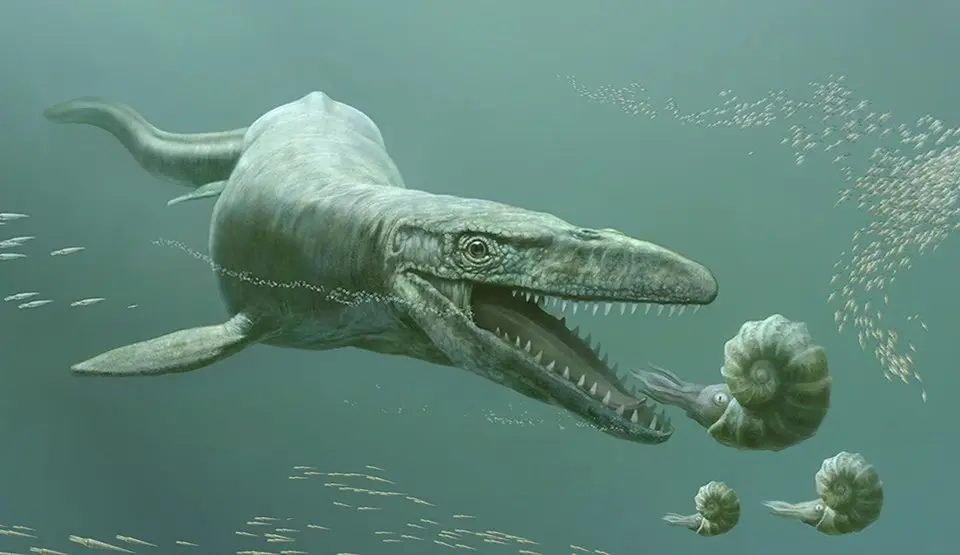
Mosasaurs were ferocious beasts that lived in the oceans during the Cretaceous period about 145 million years ago. To scientists, mosasaurs became extinct 65.5 million years ago. Most scientists don’t believe mosasaurs still exist somewhere in our oceans today. Because no fisherman has ever seen where they appear.
But others think that a small population of mosasaurs still lives in the depths of our oceans. After all, 80% of the ocean has never been mapped or even seen by humans, which means that there may be many strange beasts living there, such as mosasaurs. When the dinosaurs ruled the land, the mosasaurs ruled the sea world.
The mosasaurs had long, muscular tails, fins, and a huge head. The mosasaurs had teeth so sharp and powerful that they could eat just about anything they wanted. Although it looked a lot like a dinosaur, the mosasaur was actually a marine reptile. They are more closely related to garter snakes than to dinosaurs. Although some claim that the Loch Ness monster is a mosasaur, the Loch Ness monster has been proven to be a fake.
4. Megalodon

Megalodon can grow to a length of 15 to 24 meters and is more dangerous than all other sharks in SeaWorld. So it seems like SeaWorld would be even more dangerous if it was still alive. But no one saw them in the ocean. However, it is believed that a small group of megalodons lives in the darkest depths of the ocean. Therefore, no one can actually see it.
The mainstream view is that about 6 million years ago, giant tooth sharks only lived in the Pacific Ocean, but after 2 million years, they began to spread all over the world. Megalodon sharks may be the creatures with the strongest bite force discovered in the history of the earth.
Those who think they are still alive believe that the lack of cetacean food in the ocean caused them to start mass extinction, and a small number of megalodons entered the deep sea, where they foraged and survived.
5. Plesiosaur
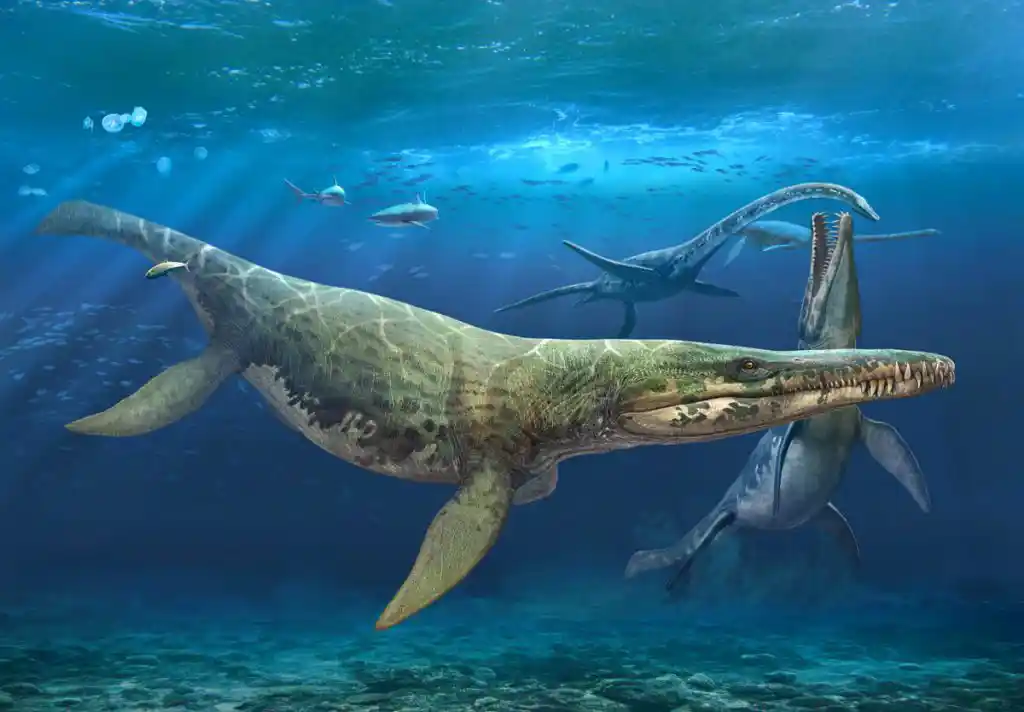
In 1977, a Japanese fishing boat accidentally discovered a dead prehistoric beast, said to be a plesiosaur. It was found 305 meters underwater off New Zealand and brought on board. When the dead animal was fished out of the water, they couldn’t believe their eyes because it looked like a monster about 10 meters long and weighed more than 1,800 kilograms. None of the fishermen on board could tell what it was.
Some believe it was a rotting whale, while others believe it was a giant sea turtle without a shell. In order not to contaminate the fish they had already caught, it was thrown back into the sea. Evidence suggests that the photos left behind were taken by one of the crew members before it was thrown back into the sea.
After returning to Japan, photos began to be released, and some professionals claimed that it was a plesiosaur, but most scientists remained more cautious, believing that it was the carcass of a decomposing whale. So far, it remains a mystery.
6. Goblin Shark

They are one of the rarer shark species. Their cylindrical bodies have small eyes and an exceptionally long nose, which is a hindrance to prey, but which may have been used to detect the presence of prey. Goblin sharks are rare large sharks that inhabit about 270 meters on the continental slope. At a depth of 960 meters, the maximum body length can reach 3.85 meters.
In 2004, the International Union for Conservation listed the Goblin Shark as a low-risk species, but their actual numbers are far greater than people think. The reason for the small number of samples may be that this kind of shark usually lives in the sea at a depth of several hundred meters and is not easy to find.
7. Giant Squid
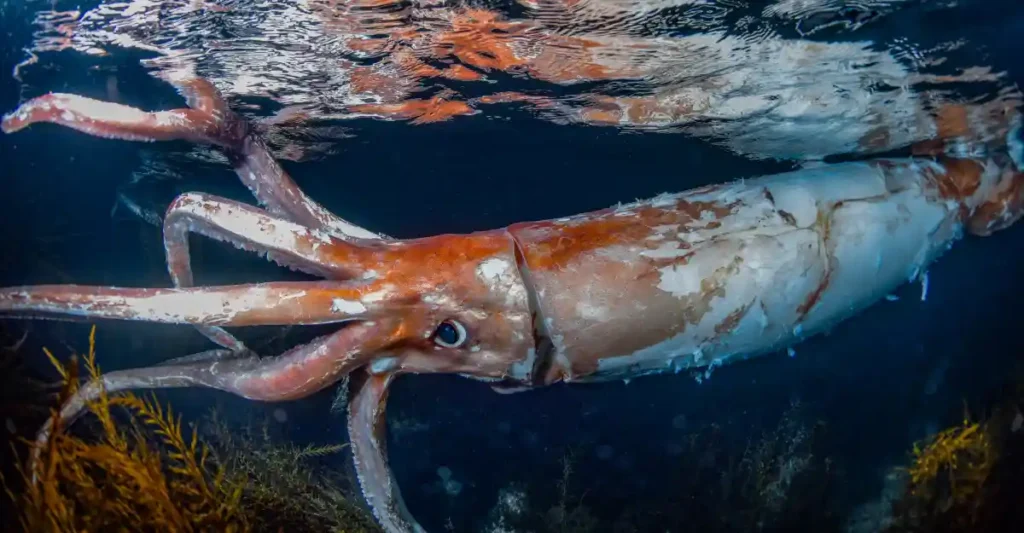
The giant squid may be one of the last mysteries left by the ocean to mankind. Since ancient times, there have been stories of terrifying sea monsters among fishermen and sailors all over the world. These sea monsters are often huge, strangely shaped, and even have seven or nine heads. The most famous of these is the “Norwegian sea monster” described by Bishop Ponto Bidan of Bergen in “Norwegian Natural History” in 1752.
It is said that “its back, or the upper part of its body, looks For about a mile and a half, it looked like a small island…. Then several shiny points or horns appeared, sticking out of the water, rising higher and higher, some as tall as the masts of medium-sized ships. These things were probably the arms of monsters, It is said that they can pull the largest warship down to the bottom of the sea.
According to Verne, it is a deep-sea villain who sneaks up on ships. It spends most of its life in seclusion in the dark deep sea. However, a fishing boat in New Zealand recently took a ” The ultimate hermit” and has been dragged out of the water at a depth of 1,800 meters. It is as big as a bus and is the largest giant squid ever discovered.
The New Zealand fishing vessel San Esprin caught the king squid by accident three weeks ago while fishing for toothfish in the Ross Sea near Antarctica. Although it has not been identified by scientists, according to preliminary estimates by officials of the New Zealand Ministry of Fisheries, it is about 10 meters long and weighs 450 kilograms, which is 150 kilograms heavier than the largest giant squid found in 2003.
8. Vampire Squid
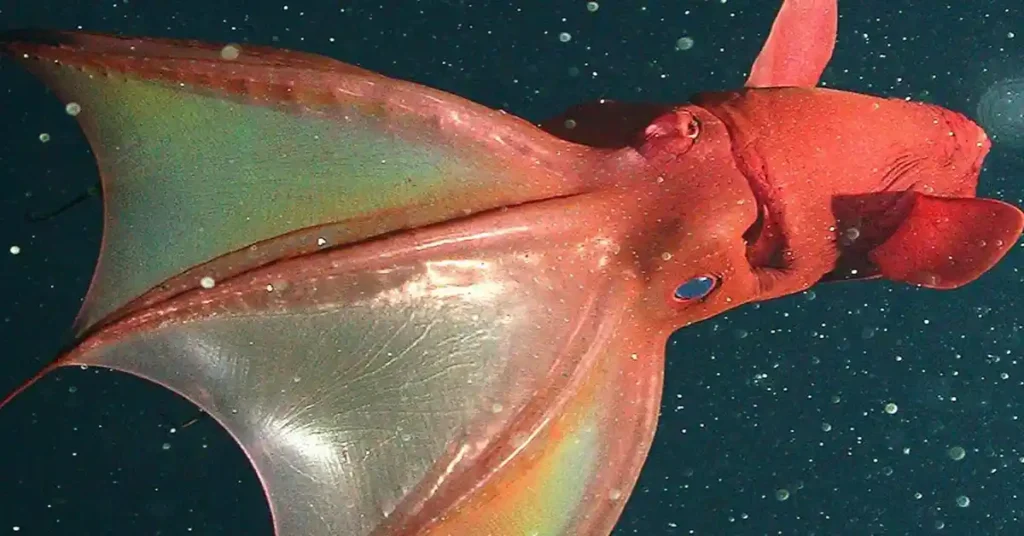
The vampire squid is named for its dark skin and cape-like skin that connects its arms, giving it a vampire-like appearance. It lives in the deepest parts of temperate and tropical oceans, where the environment is almost completely dark. The vampire squid can look very intimidating when threatened, and they have a cape that flips over when disturbed to reveal large spines.
However, although this species looks rather intimidating, it is actually harmless. This is not a predatory behavior, instead, it relies on its long filamentous tentacles to trap food particles using sticky cells. In this way, it feeds on plant and animal matter that sinks from the surface ocean.
Unlike shallow-water squid and octopus, vampire squid does not excrete black ink to escape predation. Obviously, black or deep purple inks will lose their effect in the dark areas of the deep sea. Instead, vampire squid excretes a colorless substance that contains many particles of bioluminescent material.
Like most deep-sea creatures, vampire squid is difficult to study in their natural environment, so little is known about the behavior of these animals. As the deep ocean continues to be explored, scientists are expected to find out more about this unique and intriguing species.
9. Gulper Eel

The Gulper Eel is a deep-sea fish. Devouring eels generally refer to two species of fish, one that grows to 6 feet (1.8 meters) and the other that only grows to 30 inches (75 centimeters). -1,829 meters). This quintessential deep-sea fish is one of the strangest-looking creatures in the depths of the ocean. Its most notable feature is its large mouth.
This eel does not have a movable upper jaw, but the huge lower jaw is loosely connected to the head and never closes the mouth. When it opens its mouth wide, it can easily swallow more It is a large animal, so it gets the name “Umbrella Mouth Devourer” in the West, and it is called “Kuanyan Fish” in Chinese.
The swallowed prey is put into the lower jaw bag like the fish swallowed by the pelican, so it is also called pelican eel in the west. This eel has no ribs, and its stomach is very flexible, which can expand and lay down its prey. But don’t misunderstand that it mainly eats big animals. In fact, its main food is small fish and shrimp that swim slowly, and it still eats a small number of big meals. Devouring eels have very small eyes.
10. Livyatan Whale

The largest species of the genus Leviathanocetus, the Leviathan whale is an extinct toothed whale of the Miocene period found in South America. Scientists speculate that the Melville whale was 17 meters long and 65 tons in weight.
The tooth is currently found to be up to 35cm, but in 2013 a coke-shaped whale tooth up to 40cm was found, so this Melville whale may be more than 17 meters long. Melville’s whale is also known as an apex predator. It will even prey on behemoths larger than its own body.
Melville’s Whale is also known as the Livyatan Whale, and currently, there are few fossil samples.


